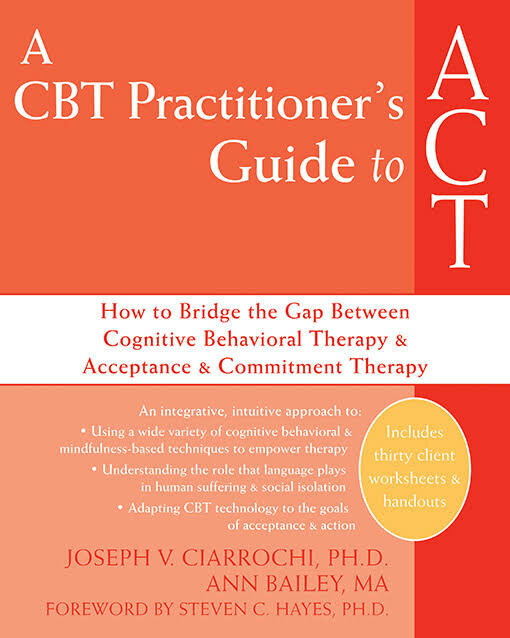Please specify the quantity of product(s).



Cognitive Behavior Therapy (CBT) Practitioner’s Guide to Acceptance and Commitment Therapy (ACT)
| Item | Product | Price | QTY |
|---|---|---|---|
| 31742 | CBT (Cognitive Behavior Therapy) Practitioner's Guide to ACT | $50.00 |
How to bridge the gap between Cognitive Behavioral Therapy and Acceptance and Commitment Therapy
Joseph V. Ciarrochi, PhD; Ann Bailey, MA
Interest in Acceptance and Commitment Therapy (ACT) is expanding rapidly. Most practitioners interested in ACT are trained using a Mechanistic Cognitive Behavioral Therapy Model (MCBT). Using both ACT and MCBT together can be difficult, because the approaches make different philosophical assumptions, and have different theoretical models. The purpose of this book is to provide a bridge between ACT and MCBT.
While the emphasis of this book will be applied to psychology, it also has important theoretical implications. It highlights where ACT and MCBT differ in their predictions, and suggests directions for future research. It is grounded in current research, and makes clear what is known, and what has yet to be tested.
The core theme of this Guide is that ACT and CBT can be unified if they share the same philosophy (functional contextualism) and theoretical orientation (Relational Frame Theory, or RFT). From a CBT practitioner’s perspective, the mechanistic, philosophical core of MCBT can be dropped, and the mechanistic information processing theory of CBT can be held lightly, and ignored in contexts where it is not useful.
From an ACT practitioner’s perspective, the decades of CBT research of cognitive schema and dysfunctional beliefs provides useful information about how clients might be cognitively fused, and how this fusion might be undermined.
The authors discuss functional contextualism and RFT in clinical practice. They highlight what functional contextualism means for the practitioner, with a particular client, and how RFT can help the practitioner understand the barriers to effective client action.
Paperback; 224 pages